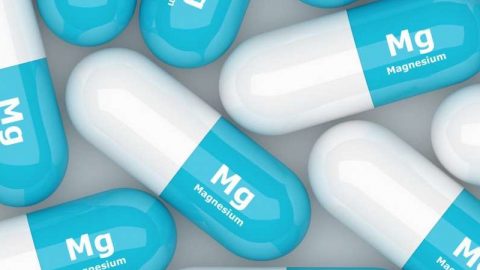January 7th 2016, the new 2015 Dietary Guidelines for Americans were released: http://health.gov/dietaryguidelines/2015/guidelines/
One would expect this to be a state-of-the art document with practical hands-on advice that will help people make better food choices and eat healthier. Not so! If you think the new Dietary Guidelines will tell you everything you need to know about what to eat and what not to eat, you will be greatly disappointed.
I would like to applaud the commentary by Dr. Katz “2015 Dietary Guidelines: A Plate Full of Politics”. Dr. Katz is the director of Yale University’s Prevention Research Center, and president of the American College of Lifestyle Medicine. His summary of the 2015 Dietary Guidelines is “a national embarrassment”.
In this article I will point our some issues that Dr. Katz raised, as well as add my own reflections based on available scientific evidence. To make up for the glaring void of food recommendations, I will end with a practical list of foods you want to eat more of and those to avoid…
Background info
Before looking under the hood of the new 2015 Dietary Guidelines, here’s a summary: http://health.gov/dietaryguidelines/2015/guidelines/executive-summary
The new Dietary Guidelines were supposed to be based on the Scientific Report of the 2015 Dietary Guidelines Advisory Committee, which was released February 2015. This Scientific Report is intended to inform the federal government of the body of scientific evidence on topics related to diet, nutrition, and health.
———————————————————————————————————————————————–
NOTE: Do not confuse the Dietary Guidelines and its Scientific Report with the specific nutrient intake requirements – such as daily amounts of protein, vitamins and minerals, commonly expressed as the RDA (Recommended Daily Allowance) – which are established by the Food and Nutrition Board of the Institute of Medicine.
The Dietary Guidelines provides food-based guidance for covering requirements. They do so by reviewing American’s nutrient intake and indicators of nutritional status, and potential nutrient-related health outcomes (such as obesity, heart disease and diabetes) to identify “shortfall nutrients” and “overconsumed nutrients”, and then determines whether these nutrients should be designated as “nutrients of public health concern.”
———————————————————————————————————————————————–
Few good things new 2015 Dietary Guidelines
Before I start trashing the Dietary Guidelines, I want to list 3 good things that they bring to the table:
1. There is no longer any restriction on total fat intake.
2. The previous limit on cholesterol intake has also been removed.
3. A limit on added (aka refined) sugars has been added, urging people to eat less than 10 percent of calories per day from sugar.
However, these points should have been picked up by the guidelines a long time ago. But let’s applaud it is now finally official!
Problems with the new 2015 Dietary Guidelines
In his commentary, Dr. Katz raises important issues with the new 2015 Dietary Guidelines. The Scientific Report of the 2015 Dietary Guidelines Advisory Committee called for limiting consumption red and processed meat (like bacon), and the International Agency on Cancer Research, a subsidiary of the World Health Organization, has concluded that processed meats are carcinogenic.[1] Despite this, the new 2015 Dietary Guidelines states that “red and processed meats and poultry (in other words, hot dogs and chicken fingers) can be part of a healthy diet as long as the diet doesn’t exceed upper limits for saturated fats and calories.”
Dr. Katz aptly points out that while the 2015 Dietary Guidelines emphasized foods over nutrients, “recommendations about what NOT to eat (or, even, what to limit) are entirely cast in terms of nutrients. We are advised to limit our intake of saturated fat, for instance – but there is virtually no language, and none featured prominently, indicating what foods to avoid to achieve that. Much the same is true of added sugar. Clearly advice about eating less of anything conflicts with the interests of some big industry sector the federal agencies and their bosses in Congress don’t want to upset. So, somehow, we are left to cut back on our intake of saturated fat and sugar while washing down our corned beef with Coca-Cola.”
Nutrient-dense foods… really?
The new 2015 Dietary Guidelines advocate nutrient-dense foods, defined as “Foods that are naturally rich in vitamins, minerals, and other substances that may have positive health effects, and are lean or low in solid fats and without added solid fats, sugars, starches, or sodium and that retain naturally-occurring components such as fiber. All vegetables, fruits, whole grains, fish, eggs, and nuts prepared without added solid fats or sugars are considered nutrient-dense, as are lean or low-fat forms of fluid milk, meat, and poultry prepared without added solid fats or sugars. Nutrient-dense foods provide substantial amounts of vitamins and minerals (micronutrients) and relatively few calories compared to forms of the food that have solid fat and/or added sugars.”
However, in the appendix Table A3-1 “Healthy U.S.-Style Eating Pattern: Recommended Amounts of Food From Each Food Group at 12 Calorie Levels” they allow for half of grain intake to come from refined grain products. For example, for a person who consumes 2,000 calories per day it is ok to eat 3 ounces of ready-to-eat cereal (about 3 cups of flaked cereal) on a daily basis. The photo at the top of the 2015 Dietary Guidelines homepage http://health.gov/dietaryguidelines/2015/guidelines/ even features cereal flakes! Apparently, according to the new 2015 Dietary Guidelines, refined grains are nutrient-dense foods…!
One can question whether humans should eat grains at all.[2-4] Consumption of cereal grains reduces the overall vitamin and mineral content of the diet because cereal grains on average are less nutrient dense for the 13 vitamins and minerals most lacking in the US diet when compared to fish, seafood, lean meat, fresh vegetables and fruits.[2] In addition to being less nutrient dense, the vitamins and minerals that cereal grains provide are of low biological availability.[3] To make it worse, cereal grains contain a variety of anti-nutrients (phytates, alkylresorcinols, protease inhibitors, lectins, etc.) and proteins (gluten) which adversely affect health.[3] Wheat, but also other cereal grains also contribute to the manifestation of chronic inflammation and autoimmune diseases by increasing intestinal permeability and initiating a pro-inflammatory immune responses.[4]
One reason – aside lobbying from the big food industry sector – that cereal grains are heavily recommended by dietary guidelines may be that without them, humanity would likely have never evolved the complex cultural and technological innovations which allowed our departure from the hunter-gatherer niche.[3] However, this does not mean that today’s society will benefit from their continuing consumption. Because of the dissonance between human evolutionary nutritional requirements and the nutrient content of these domesticated grasses, a large number of people suffer diseases and metabolic dysfunction directly attributable to the consumption of cereal grains.[3]
What about salt restriction?
Dietary guidelines have urged to us to restrict salt (i.e. sodium) intake for a long time. This is a topic I will cover in more depth in a separate upcoming article. But I want to point out here that the supposed health benefits of salt reduction are heavily debated.[5-11] Americans consume around 3.5 to 5 g sodium per day.[7, 12] The new 2015 Dietary Guidelines urges us to cut sodium intake to less than 2.3 g per day. This despite large studies showing that of over 100,000 subjects showing that sodium intake between
3 and 6 g per day is associated with a lower risk of death and cardiovascular events compared to either a higher or lower level of intake.[13, 14] Thus, guidelines advising restriction of sodium intake below 3 g per day may actually cause is harm.
Saturated fat – should we really limit our intakes?
While the new 2015 Dietary Guidelines have dropped the restriction on cholesterol intake and total fat intake (which they should have done a long time ago), there is still an inordinate focus on limiting saturated fat intake to less than 10%. This despite that the scientific report cited two large meta-analyses showing that saturated fat intake is not associated with an increased risk of heart disease.[15, 16] For ex. a notable meta-analysis including 347,747 subjects followed for up to 23 years showed that there is no significant evidence for concluding that dietary saturated fat is associated with an increased risk of coronary heart disease or cardiovascular disease.[16] Another very large meta-analysis of both observational studies and randomized controlled trials concluded that evidence does not clearly support cardiovascular guidelines that encourage high consumption of polyunsaturated fatty acids and low consumption of total saturated fats.[15] One explanation for previous findings of reduced risk when replacing saturated fat with polyunsaturated fat is that the classification of polyunsaturated fat included both omega-6 and omega-3 fats, and those replaced not just saturated fat but also trans fats (which are well established health enemies [17]).[18, 19]
The most recent meta-analysis (published Aug 2015) concluded that saturated fats are not associated with all-cause mortality, cardiovascular disease, coronary heart disease, ischemic stroke, or type 2 diabetes.[20] This study also urged that dietary guideline authorities carefully consider the health effects of recommendations for alternative macronutrients to replace trans fats and saturated fats, as replacing saturated fat with carbohydrates is associated with development of atherogenic dyslipidemia (i.e. a deleterious profile of cholesterol and fats in the blood)[21] and increased cardiovascular disease risk.[22]
Public health emphasis on reducing saturated fat intake without considering the replacement nutrient or – more importantly – the many other food-based risk factors for cardio-metabolic disease is unlikely to produce the intended benefits.[23, 24] In line with this, the ‘badness” of saturated fat reported in some studies is determined by the specific foods that provide them, and not the amount of saturated fat per se.[24, 25] Specifically, saturated fat from dairy is not harmful and may even reduce risk of cardiovascular disease compared to saturated fat from processed meat.[24, 25]
Critical importance of food processing
Another glaring omission from new 2015 Dietary Guidelines is the total lack of attention given to the health consequences of processed foods. A large body of evidence shows the deleterious effects of food processing on nutrition quality [26-29]; only people who consume the lowest amounts of ultra-processed products (less than approx. 30% of total caloric intake) are anywhere near reaching all nutrient goals for the prevention of obesity and chronic diseases.[30] Mounting data indicates that consumption of ultra-processed may be fueling the epidemics of obesity [31-34] and metabolic syndrome [35], as well as cardiovascular disease.[36]
Considering that ultra-processed foods are dominant is the current food supply [37-40] – in the US they contribute on average almost 1000 calories per day [40] – governments and health authorities should use all possible methods, including legislation and statutory regulation, to halt and reverse the replacement of minimally processed foods by unhealthy ultra-processed food products.[28] Considering this, it is a BIG shame – indeed “a national embarrassment” – that new 2015 Dietary Guidelines are even including refined grain products in their sample menu!
Tell me which foods to eat and which to avoid!
The new 2015 Dietary Guidelines completely failed when it comes to giving people direct and practical recommendations on actual foods to eat and avoid. As of this writing, there is a lot of research showing significant health benefits of dairy, raw (unprocessed) nuts, whole eggs and berries. I will cover each of these in separate upcoming articles. And abandon processed cereals (which currently decorate the homepage of the 2015 Dietary Guidelines!). If you are serious about your health, shun all grain based foods and eat more of fish, poultry, rarely cooked meat, veggies, dairy, raw nuts, whole eggs, berries and fruit. Hopefully the 2025 Dietary Guidelines will included them in their recommendations… in the meantime, make these foods your staple, and your health will be taken care of.
Bottom Line
To illustrate the resistance of government authorities, the cholesterol saga is a poster child example. The 2015 Dietary Guidelines Advisory Committee stated in its scientific report that:
“Previously, the Dietary Guidelines for Americans recommended that cholesterol intake be limited to no more than 300 mg/day. The 2015 DGAC will not bring forward this recommendation because available evidence shows no appreciable relationship between consumption of dietary cholesterol and serum cholesterol, consistent with the conclusions of the AHA/ACC report.”
A recommendation known worldwide that lasted for 47 years has now been discarded and we can all go back to including eggs in our diets. The United States, which was first to promote the “no more than
300 mg cholesterol per day” recommendation, is now one of the last countries to drop it.[41] It is
interesting to note that it required a much greater amount of research to prove that egg intake does not increase cardiovascular disease risk than it did to initially condemn it as a significant contributor to cardiovascular disease.
Instead of classifying foods based on botanical or animal origins, a strong case can be made to classify foods based on the extent and purpose of industrial food processing.[42-44] Food processing is defined as “the methods and techniques used by food manufacturers and associated industries to make unprocessed or ’raw‘ foods less perishable, easier to prepare, consume or digest, or more palatable and enjoyable, or else to transform them into food products”.[43] I end this article with a table showing how such a classification can look.
Table: Food classification based on degree and purpose of food processing.[43]

Mounting scientific evidence suggests that current food classification in does not enable solid nutritional
recommendations for prevention of diet-related chronic diseases.[42]
Take home message
Boycott the new 2015 Dietary Guidelines!
Take control of your health by avoiding ultra- processed foods at all cost and making the following foods a staple in your diet:
Berries and fruit
Dairy
Eggs (including the yolk)
Fish
Meat (unprocessed and rarely cooked)
Nuts
Poultry
Veggies
Voila!
———————————————————————————————————————————————–
About Monica Mollica > www.Ageless.Fitness

Monica Mollica holds a Master degree in Nutrition from the University of Stockholm / Karolinska Institue, Sweden. She has also done PhD level course work at renowned Baylor University, TX.
Having lost her father in a lifestyle-induced heart attack at an age of 48, she is a strong advocate of primary prevention and early intervention, and the development of lifestyle habits for health promotion at all ages.
Today, Monica is sharing her solid medical research insights, real life hands on experience, and passion for health and fitness by offering nutrition / supplementation / exercise / health consultation services, and working as a medical writer specializing in health promotion, fitness and anti-aging.
She is currently in the process of writing a book on testosterone, covering health related issues for both men and women.
———————————————————————————————————————————————–
References:
1. International Agency for Research on Cancer, W., IARC Monographs evaluate consumption of red meat and processed meat. Avaliable at http://www.iarc.fr/en/media-centre/pr/2015/pdfs/pr240_E.pdf Accessed January 8th, 2016. 2015.
2. Cordain, L., et al., Origins and evolution of the Western diet: health implications for the 21st century. Am J Clin Nutr, 2005. 81(2): p. 341-54.
3. Cordain, L., Cereal grains: humanity’s double-edged sword. World Rev Nutr Diet, 1999. 84: p. 19-73.
4. de Punder, K. and L. Pruimboom, The dietary intake of wheat and other cereal grains and their role in inflammation. Nutrients, 2013. 5(3): p. 771-87.
5. Heaney, R.P., Making Sense of the Science of Sodium. Nutr Today, 2015. 50(2): p. 63-66.
6. Alderman, M.H., The science upon which to base dietary sodium policy. Adv Nutr, 2014. 5(6): p. 764-9.
7. DiNicolantonio, J.J. and S.C. Lucan, The wrong white crystals: not salt but sugar as aetiological in hypertension and cardiometabolic disease. Open Heart, 2014. 1(1): p. e000167.
8. DiNicolantonio, J.J., J.H. O’Keefe, and S.C. Lucan, Population-wide sodium reduction: reasons to resist. Mayo Clin Proc, 2014. 89(3): p. 426-7.
9. DiNicolantonio, J.J., et al., Problems with the American Heart Association Presidential Advisory advocating sodium restriction. Am J Hypertens, 2013. 26(10): p. 1201-4.
10. DiNicolantonio, J.J., et al., Dietary sodium restriction: take it with a grain of salt. Am J Med, 2013. 126(11): p. 951-5.
11. Mente, A., M.J. O’Donnell, and S. Yusuf, The population risks of dietary salt excess are exaggerated. Can J Cardiol, 2014. 30(5): p. 507-12.
12. McCarron, D.A., What determines human sodium intake: policy or physiology? Adv Nutr, 2014. 5(5): p. 578-84.
13. O’Donnell, M., et al., Urinary sodium and potassium excretion, mortality, and cardiovascular events. N Engl J Med, 2014. 371(7): p. 612-23.
14. O’Donnell, M.J., et al., Urinary sodium and potassium excretion and risk of cardiovascular events. JAMA, 2011. 306(20): p. 2229-38.
15. Chowdhury, R., et al., Association of dietary, circulating, and supplement fatty acids with coronary risk: a systematic review and meta-analysis. Ann Intern Med, 2014. 160(6): p. 398-406.
16. Siri-Tarino, P.W., et al., Meta-analysis of prospective cohort studies evaluating the association of saturated fat with cardiovascular disease. Am J Clin Nutr, 2010. 91(3): p. 535-46.
17. Remig, V., et al., Trans fats in America: a review of their use, consumption, health implications, and regulation. J Am Diet Assoc, 2010. 110(4): p. 585-92.
18. Ramsden, C.E., et al., n-6 fatty acid-specific and mixed polyunsaturate dietary interventions have different effects on CHD risk: a meta-analysis of randomised controlled trials. Br J Nutr, 2010. 104(11): p. 1586-600.
19. Ramsden, C.E., et al., Don’t disregard the essential distinction between PUFA species. Br J Nutr, 2011. 106(6): p. 953-7.
20. de Souza, R.J., et al., Intake of saturated and trans unsaturated fatty acids and risk of all cause mortality, cardiovascular disease, and type 2 diabetes: systematic review and meta-analysis of observational studies. BMJ, 2015. 351: p. h3978.
21. Siri-Tarino, P.W., et al., Saturated fatty acids and risk of coronary heart disease: modulation by replacement nutrients. Curr Atheroscler Rep, 2010. 12(6): p. 384-90.
22. Kuipers, R.S., et al., Saturated fat, carbohydrates and cardiovascular disease. Neth J Med, 2011. 69(9): p. 372-8.
23. Micha, R. and D. Mozaffarian, Saturated fat and cardiometabolic risk factors, coronary heart disease, stroke, and diabetes: a fresh look at the evidence. Lipids, 2010. 45(10): p. 893-905.
24. de Oliveira Otto, M.C., et al., Dietary intake of saturated fat by food source and incident cardiovascular disease: the Multi-Ethnic Study of Atherosclerosis. Am J Clin Nutr, 2012. 96(2): p. 397-404.
25. O’Sullivan, T.A., et al., Food sources of saturated fat and the association with mortality: a meta-analysis. Am J Public Health, 2013. 103(9): p. e31-42.
26. Luiten, C.M., et al., Ultra-processed foods have the worst nutrient profile, yet they are the most available packaged products in a sample of New Zealand supermarkets. Public Health Nutr, 2015: p. 1-9.
27. Costa Louzada, M.L., et al., Ultra-processed foods and the nutritional dietary profile in Brazil. Rev Saude Publica, 2015. 49: p. 38.
28. Monteiro, C.A., et al., Increasing consumption of ultra-processed foods and likely impact on human health: evidence from Brazil. Public Health Nutr, 2011. 14(1): p. 5-13.
29. Louzada, M.L., et al., Impact of ultra-processed foods on micronutrient content in the Brazilian diet. Rev Saude Publica, 2015. 49: p. 45.
30. Moubarac, J.C., et al., Consumption of ultra-processed foods and likely impact on human health. Evidence from Canada. Public Health Nutr, 2013. 16(12): p. 2240-8.
31. Louzada, M.L., et al., Consumption of ultra-processed foods and obesity in Brazilian adolescents and adults. Prev Med, 2015. 81: p. 9-15.
32. Canella, D.S., et al., Ultra-processed food products and obesity in Brazilian households (2008-2009). PLoS One, 2014. 9(3): p. e92752.
33. Juul, F. and E. Hemmingsson, Trends in consumption of ultra-processed foods and obesity in Sweden between 1960 and 2010. Public Health Nutr, 2015. 18(17): p. 3096-107.
34. Monteiro, C.A., The Present Role of Industrial Food Processing in Food Systems and Its Implications for Controlling the Obesity Pandemic. J Nutr Sci Vitaminol (Tokyo), 2015. 61 Suppl: p. S203.
35. Tavares, L.F., et al., Relationship between ultra-processed foods and metabolic syndrome in adolescents from a Brazilian Family Doctor Program. Public Health Nutr, 2012. 15(1): p. 82-7.
36. Moreira, P.V., et al., Comparing different policy scenarios to reduce the consumption of ultra-processed foods in UK: impact on cardiovascular disease mortality using a modelling approach. PLoS One, 2015. 10(2): p. e0118353.
37. Monteiro, C.A., et al., Ultra-processed products are becoming dominant in the global food system. Obes Rev, 2013. 14 Suppl 2: p. 21-8.
38. Moubarac, J.C., et al., Processed and ultra-processed food products: consumption trends in Canada from 1938 to 2011. Can J Diet Pract Res, 2014. 75(1): p. 15-21.
39. Solberg, S.L., L. Terragni, and S.I. Granheim, Ultra-processed food purchases in Norway: a quantitative study on a representative sample of food retailers. Public Health Nutr, 2015: p. 1-12.
40. Poti, J.M., et al., Is the degree of food processing and convenience linked with the nutritional quality of foods purchased by US households? Am J Clin Nutr, 2015. 101(6): p. 1251-62.
41. McNamara, D.J., The Fifty Year Rehabilitation of the Egg. Nutrients, 2015. 7(10): p. 8716-22.
42. Fardet, A., et al., Current Food Classifications in Epidemiological Studies Do Not Enable Solid Nutritional Recommendations for Preventing Diet-Related Chronic Diseases: The Impact of Food Processing. Adv Nutr, 2015. 6(6): p. 629-38.
43. Moubarac, J.C., et al., Food Classification Systems Based on Food Processing: Significance and Implications for Policies and Actions: A Systematic Literature Review and Assessment. Curr Obes Rep, 2014. 3(2): p. 256-72.
44. Monteiro, C.A., et al., A new classification of foods based on the extent and purpose of their processing. Cad Saude Publica, 2010. 26(11): p. 2039-49.








Another tour de force article from Monica!
Hey Monica, I’m curious where beans and legumes fit into all this. It looks like dried beans are considered unprocessed, but canned beans are processed. What’s your opinion? I know that without grains and without beans, I have a hard time feeling sated.